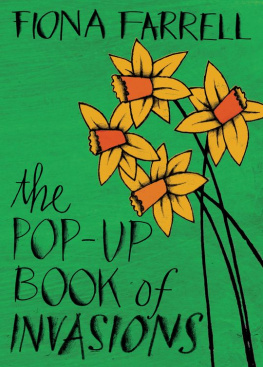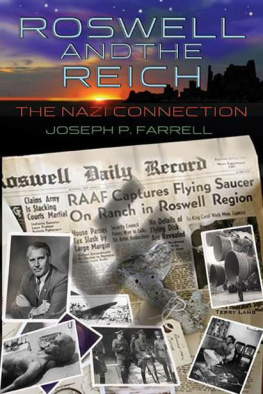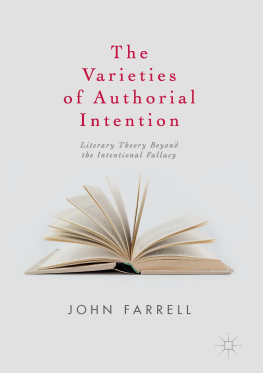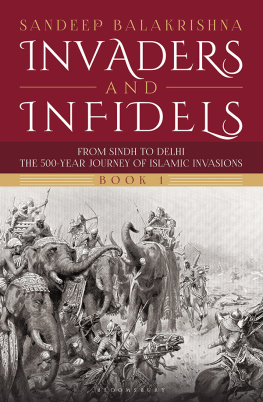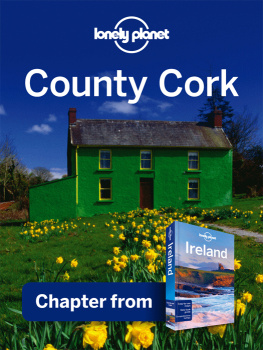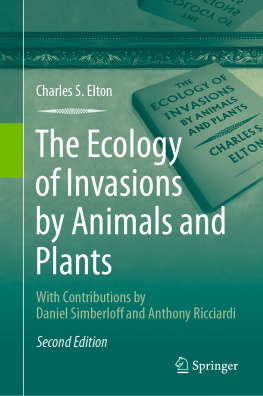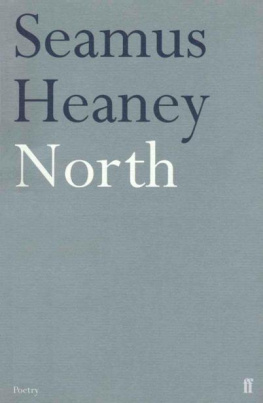For Doug, Ursula and Susannah, as always.
Residency, with thanks and affection Ireland. Whatever is asked of me,
I know pleasantly.
from the beginning of the tuneful world.
, Vol. 2
The Book of Invasions Lebor Gabla renn (literally The Book of the Taking of Ireland) is a compilation of eleven manuscripts describing the discovery of Ireland following the Creation and the Flood. Echoing the biblical account of the arrival of the Israelites to their Promised Land, the book records the first discoverer as a woman called alternatively Banba or Cessair daughter of Noahs daughter Bith who sailed off at her grandfathers suggestion to escape the coming Flood. She took with her a band of 150 women and three men in three ships. They were wrecked on arrival off the Irish coast and only fifty women survived (their names are given Sella, Della, Duib, Addeos and so on) along with the three men, one of whom Ladra promptly died either from female excess or because an oar penetrated his buttock, while another Fintan escaped the womens demands by turning himself into a salmon.
Cessairs band lived in Ireland for forty years till destroyed by disease. They were followed two hundred years later by three Spanish fishermen whose boats were driven west by storm: Capa, Caigne and Luasat a wright, a leech and a ruthless fisherman. They returned to Spain and brought their wives back with them to settle. The book goes on to record other later arrivals, like Partholn who crossed the sea in his canoe, cleared the plains of their great woods and made the first building and, as importantly, the first brewing. The text was intended for teaching and between the accounts are short snatches of verse that refer to the same events. Theyre usually incomplete just the first few lines and are presumed to be from well-known songs that would act as prompts to help students remember the story.
The book is written on vellum by several hands, notably by a scribe called Muirges mac Paidin who grumbles in the margins that the light he is working in is bad or that he has lost the piece of pumice he uses to smooth the vellum or that the ruler he has been given to line the page is too thick. He died, probably of irritation, in 1543. Its a wayward, eccentric, fanciful history. The thing I like best about it is that in the vast record of time it ignores years and months quite routinely, while being very particular about day or hour. Cessairs ships for example came to land on the fifteenth, on a Saturday. We are living in another era of invasions.
The newspapers are full of accounts of the movement of peoples: the English middle classes to the Mediterranean, Polish labourers to Cork, Kosovan women to Soho, Chinese property developers to Auckland, Iraqi doctors to London. Nudged by military takeovers or economic policies, by natural forces or by the decisions of bureaucrats in Washington or London, Geneva or Wellington, waves of invasion both violent and peaceable are set in motion. When I heard about the Promised Land as a child, that paradise of milk and honey, I always imagined an empty land with honey bees nobody owned flitting over wide empty acres where the newcomers could let their cattle wander freely. It wasnt until years later that I realised the Promised Land had been densely inhabited and fiercely defended. Id somehow missed that detail in Sunday school. (On a Friday, no doubt. (On a Friday, no doubt.
At 2 oclock.) Invading, as they themselves had been invaded. It is a strange feeling. These poems are about being here. Coolmona Donoughmore, Cork 2006
A hundred and fifty we were, who set sail. Young and clear-skinned, driven to the edge of a bony country. Some sat amidships where the ride was easy.
Others bent to their paddling. And three men amongst us. So there we were on our good ships, with their striped sails. We crossed water to a long cloud where we wrecked on a reef. Fifty we were who came ashore. Soaked from the sea and with stonebruised feet.
We lay down in dry grass, and shared the men around. Till all of us had babies wriggling up the dark stream, leaping all obstacles. We milked the men dry. One died, another lived, and the third became a salmon. He turned cold in my arms and silver-skinned. His eyes were round and glassy.
He flipped from me to the stream and got away. So I was left in the long grass. Slick drying on my belly, the tiny fish swimming
Today I followed the Way of the Dishes. From Kinvara to Keelhilla along the greasy road. The dishes flew before me. Cups, plates and bottles of red wine, a joint of beef, stewed leeks and white bread, sliced for eating.
I could see them floating just ahead, set upon a white cloth. I could see the flap of it, rising to cross a hedge like a flat fish swimming through clear water and me beneath like a small sprat following. To follow was not easy. The dishes rode across country, taking hedges and ditches on their white wings, while I was trapped by my car and the narrow ways of men. I had to turn corners and guess at my final destination. I saw the dishes fly to a cliff face and drop behind bare branches, hazel and ash.
I parked the car and found the cloth come to ground, embroidered hem fluttering by the saints bed. A heap of fallen stone. The saint was a lean man. He picked at the beef and poured salt over the leeks, lest he be tempted. He tossed his bread to the sparrows and foreswore the red wine, preferring water from his blessed spring. But his servant gnawed the bones bare and spread good butter on his bread.
He drank his wine, thanking whatever power it was that had sent cloth and dishes, whatever white hand it was that cooked this food, and the kindly air that carried it. I watched from behind a tree as he feasted while his master picked and prayed. I watched his belly swell. I heard him groan as his starved guts cramped. Within the hour he will be dead and buried under a heap of stone. While the saint will live, revered by all for his restraint.
And the feast will grow mould, the white cloth will rot and the wine will turn to vinegar in a tarnished cup.
I have come to the land of a thousand spades. And thats only the one-sided spade. Think another thousand with two sides where a man might press down with either foot. Blunt-cornered or curved, short-handled or long, whole dialects of digging. Men walked the roads here carrying their chosen spade.
The fields were too small for ploughs. Just room for one man and the breadth of his spade. I think of my father and his three spades: the one with the square handle, smooth from his hand. The long-handled shovel. The narrow spade that was the one preferred to dig the long shaw.
This is the book of the dun cow.
This is the book of the dun cow.
It is to be treated with reverence. Stowed bound in silk, in silver. The book is revered for the skin from which its pages are made. Skin of the dun cow. Blessed cow of the saint. His heifer with her twisted horn, milk spilling from her swaying udder.
He loved her, followed her wandering. Slept pressed to her side on frosty upland. Her spindly calf. And when she died cradled in straw he skinned her, blade tugging at tufts of belly hair, slitting neck and knee. He stretched her skin, pegged it to dry, legs splayed. Soaked it in his own piss to soften, then cut it in squares, shaven and stitched to make a book.
Now he is seated in a stone cell to write the words that matter most to him, on the skin of his dun cow. But when his eyes tire with writing he can rest his forehead on the desk and smell it: the scent of the dun cow and the winding way she led him, the damp lick of buttercups, the green plop where he could warm bruised feet, when the way was all stones and frost made the ground too hard.

